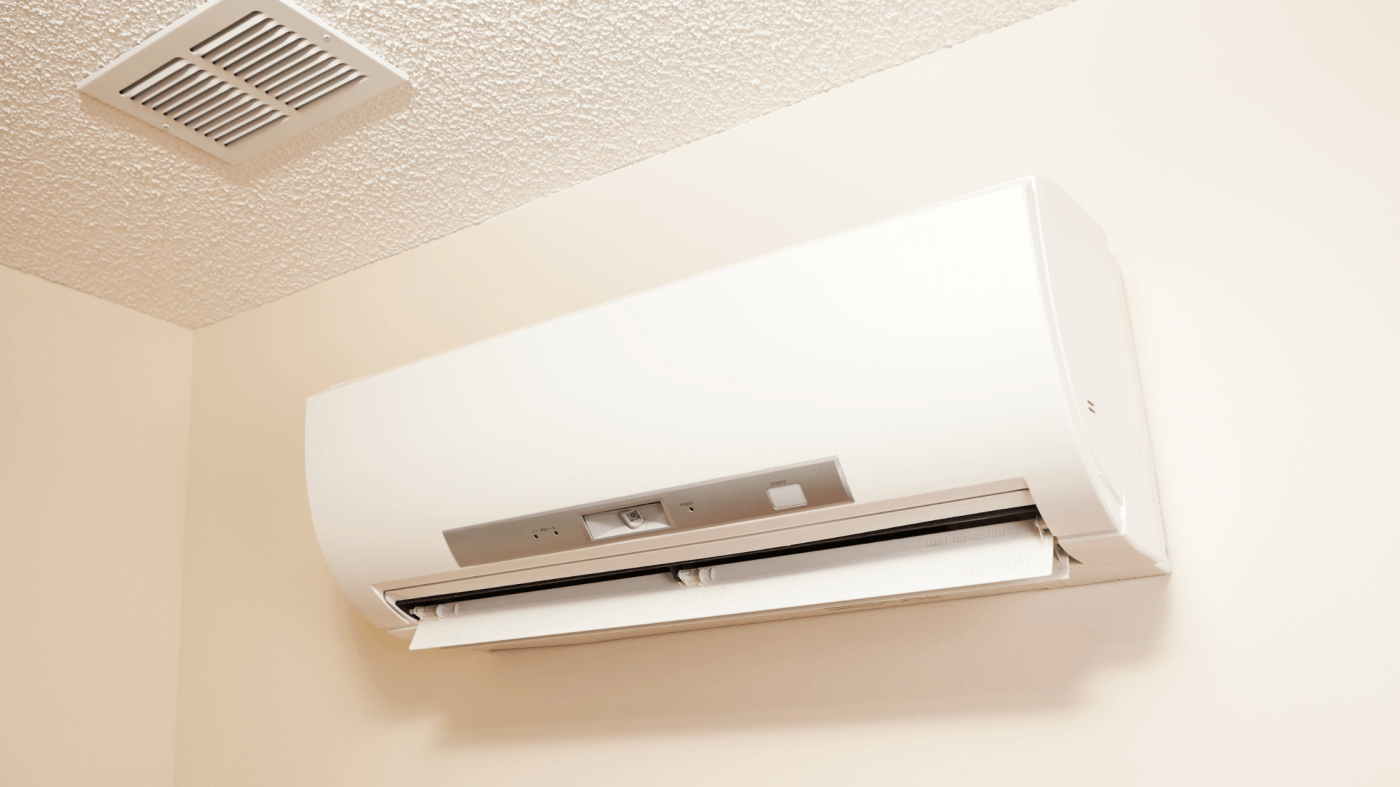If you're considering a mini-split air conditioner, it's helpful to understand how much electricity a mini-split use. Mini-splits are a popular choice for cooling indoor spaces, but it's essential to consider the cost of cooling and heating your home.
How Much Electricity Does a Mini Split Use
Mini-splits work in a similar way to central air conditioning units. They use an outdoor condenser connected to one or multiple indoor "air handlers" via refrigerant lines. The outside unit pumps refrigerant into the interior, running through the coils and cooling the air. While energy-efficient, mini splits do still require electricity for operation.
Factors Impacting Electricity Usage
The amount of electricity a mini split use varies depending on the size of the unit and whether you're using it just to cool or cool and heat your home. A rough estimate is that a single-zone mini-split system uses approximately 1150 watts per hour, with additional energy usage for heating totaling around 2000 watts per hour. Keep in mind that this number may vary slightly depending on certain factors, such as the temperature setting in your home and how often you use it.

How Much Energy Does a Mini-Split Use: Measured By BTU
A common question people ask when looking to install a mini split is, "What size should I get?" That's because, to calculate the electricity usage of your mini split accurately, you must first identify its BTU rating. But what is BTU? BTU stands for British Thermal Unit, which measures how much power a device requires to function. To help give you an idea, a 12000 BTU unit will consume approximately 1.27 kWh/h, while a 24000 BTU unit will consume approximately 2.54 kWh/h.
| Mini Split Capacity | Energy Consumption Per Hour | Energy Consumption Per Day |
| 9000 Btu | 0.44 to 0.70 kWh | 10.5 to 17 kWh |
| 12000 Btu | 0.6 to 1.0 kWh | 14.4 to 23 kWh |
| 18000 Btu | 0.90 to 1.5 kWh | 21.6 to 36 kWh |
| 24000 Btu | 1.25 to 2 kWh | 30 to 48 kWh |
| 30000 Btu | 1.6 to 3.0 kWh | 38.5 to 71 kWh |
| 36000 Btu | 2.0 to 3.6 kWh | 48 to 88 kWh |
| 42000 Btu | 2.4 to 4.1 kWh | 57.6 to 100 kWh |
| 48000 Btu | 2.4 to 5.5 kWh | 58 to 131 kWh |
When calculating the BTU rating for your mini-split, it's essential to consider a few factors. The following are key considerations:
- Square footage - Measuring the square footage of your desired room or area is essential to determine the correct output size of your mini split system. As a general rule of thumb, most contractors recommend 20 BTUs for every square foot of space for optimal efficiency and comfort levels. To make this process easier, you can use our mini-split sizing calculator to get a precise recommendation based on your room dimensions and specific requirements.
- Insulation - Good insulation helps keep the temperature and humidity levels consistent throughout your space and can reduce energy consumption over time
- Number of occupants - The more people in the room, the higher heat generated and thus higher BTUs needed for comfort levels

Factoring in Your Location and Climate
You probably already know that your location and climate can have a big impact on your HVAC system's efficiency—but did you know it can also impact your mini-split electricity usage?
MRCOOL E Star DIY 4th Gen 36k BTU Ductless Mini-Split Heat Pump Complete System - 208-230V/60Hz

$2,888.00
E Star DIY 4th Gen 36k BTU Ductless Mini-Split Heat Pump Complete System - 208-230V/60Hz The E Star DIY 4th Gen 36k BTU Ductless Mini-Split Heat Pump Complete System - 208-230V/60Hz is a high-performance heating and cooling solution for medium… read more
Temperature extremes
- The colder (or hotter) it is, the harder your mini-split has to work. That means cold climates like New England need a higher capacity mini split since the temperatures vary widely. Your utility bills will reflect this difference.
Humidity levels
- High humidity levels can cause many issues for both traditional HVAC systems and mini splits. Your system has to work harder to remove moisture from the air while maintaining a comfortable temperature. Still, the good news is that some models are designed specifically for high-humidity settings.
To get an accurate estimate of how much electricity a mini-split use in your area, you'll want to factor in the following:
- The maximum daily and monthly temperature extremes, as well as the average annual temperature
- Average humidity levels in your area at different times of year
- The size and type of mini split you choose (like whether or not it's single-zone or multi-zone)

Consider Your Home's Size and Layout
When estimating the electricity usage of a mini split, you'll need to consider the size of your home and its layout.
A general rule of thumb for a single zone mini split is that it will consume approximately 975 watts per hour. This figure can vary depending on the SEER rating, which measures the output of your system. A SEER rating above 16 will use more energy per hour, while a lower rating (10 - 12) may use less energy.
More Factors of Mini Split Electricity Consumption
Another factor is your home's size—the bigger it is, the more electricity your mini-split will consume. Your home's layout also matters—for example, depending on where you place your system within a multi-level building, you might have to use more energy to cool or heat those rooms that are further away from the outdoor unit.
Using an electricity usage meter or wattage meter can effectively track exactly how much electricity you are consuming with your mini-split to keep accurate tabs on energy costs.

Estimating Daily Mini Split Run Time
One of the most important factors in calculating the electricity usage of a mini-split system is estimating how long it runs every day. To do this, you need to know the following:
- The cooling and/or heating capacity of your mini split system
- The temperature you want to maintain
- The outdoor temperature and humidity conditions
- The number of people in the room
- The size of the room (including wall insulation and windows)
- How often doors or windows are opened
- Any other heat sources in the room, such as lighting, computers, or appliances
The length of run time will vary based on this information, so use an online calculator to get a daily run time estimate for your specific situation. With this information, you can estimate how much electricity your mini-split uses, which lets you plan for any necessary increases in energy costs associated with running a mini-split system in your home or office space.
Buck Cool Mini-Split EZ Connect 24K BTU Complete Installation Kit

$3,012.12
$3,709.99
Buck Cool Mini-Split EZ Connect 24K BTU Complete Installation Kit The Buck Cool Mini-Split EZ Connect Complete Kits are designed to offer a simple solution for your heating and cooling needs. The pre-charged EZ Connect line sets allow for a… read more
Tips to Reduce Mini Split Energy Consumption
Now that you know how much electricity your mini-split will use, here are a few tips for keeping your mini-split electricity bills low.
Get the Appropriate Size Unit
-
Sizing a mini split correctly is essential to ensuring that it consumes fewer watts and operates efficiently. If the unit is too big, it will consume more power and short cycle, resulting in higher electricity bills. To get the right size unit, consider these factors:
-
- Size of the room
-
- Level of insulation
-
- Windows and ceilings
-
- Number of people in the room
-
- Walls & floors
-
- Layout & design
-
Regular Maintenance
- Regular maintenance can help keep your mini split energy efficient all year round and lower your bills long-term by preventing costly repairs. When maintained regularly, a mini-split can continue to run as efficiently as possible instead of decaying efficiency with age and lack of care.
Upgrade To An Energy-Efficient Model
- Older models of mini splits may only have an EER rating between 7 and 10, whereas newer models are up to five times more efficient, with EER ratings reaching up to 50! This means if you upgrade from an older model to a newer one with a higher rating, you can potentially save hundreds each year on energy costs just by switching over!

Do Mini Splits use a Lot of Electricity?
Calculating mini-split electricity usage is integral to consider if this type of heat pump is right for you. Using energy star calculators and other helpful tools gives you a more accurate idea of how much electricity your mini-split will use regularly.
Ultimately, mini-split systems can be a cost-effective and energy-efficient way to heat and cool your home. When you take the time to calculate your mini-split electricity usage accurately, you can make sure you're getting the most out of your heat pump. Knowing exactly how much electricity your mini-split is using will also help you save money in the long run by ensuring you're not overpaying for energy costs.
Read Trusted Mini-Split Resources
We have plenty of resources are available online if you're interested in learning more about mini-split systems. Check out some of our other blog posts on the topic: Best mini splits of 2023, and see if they Are right for you. You should also learn what size mini split you need for your garage and the disadvantages of mini splits.
Table of Contents: How Much Electricity Does A Mini Split Use
- How Much Electricity Does a Mini Split Use
- Determine Your Mini Split's BTU Rating
- Factoring in Your Location and Climate
- Consider Your Home's Size and Layout
- Estimating Daily Mini Split Run Time
- Tips to Reduce Mini Split Electricity Bills
- Calculating Mini Split Electricity Usage
- Read Trusted Mini-Split Resources





